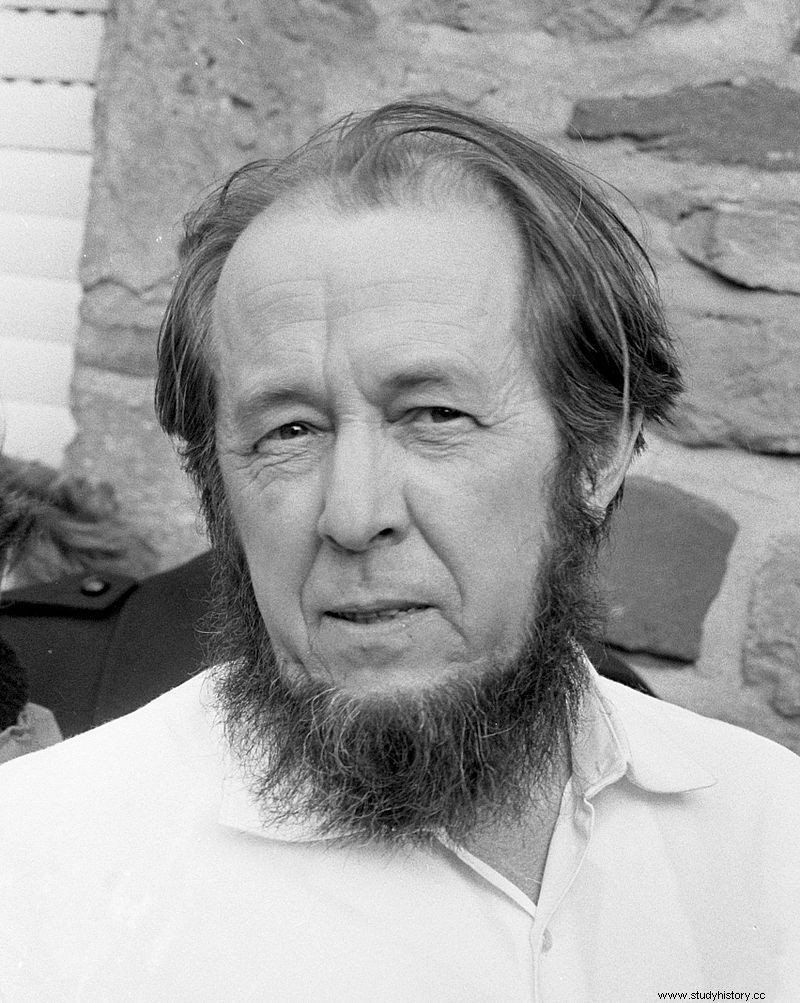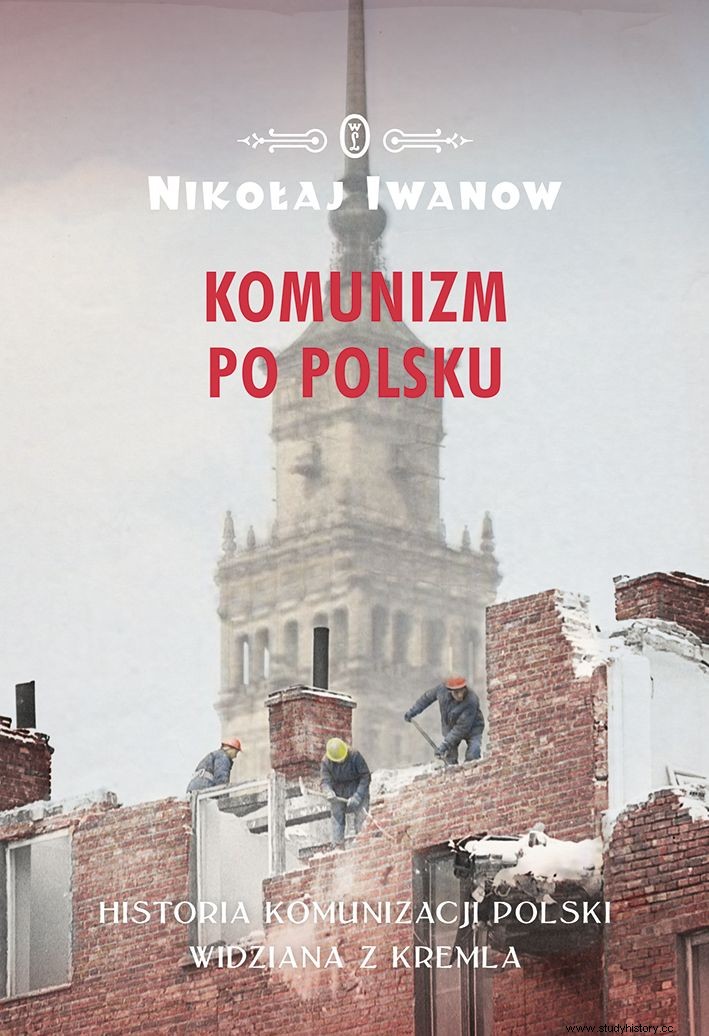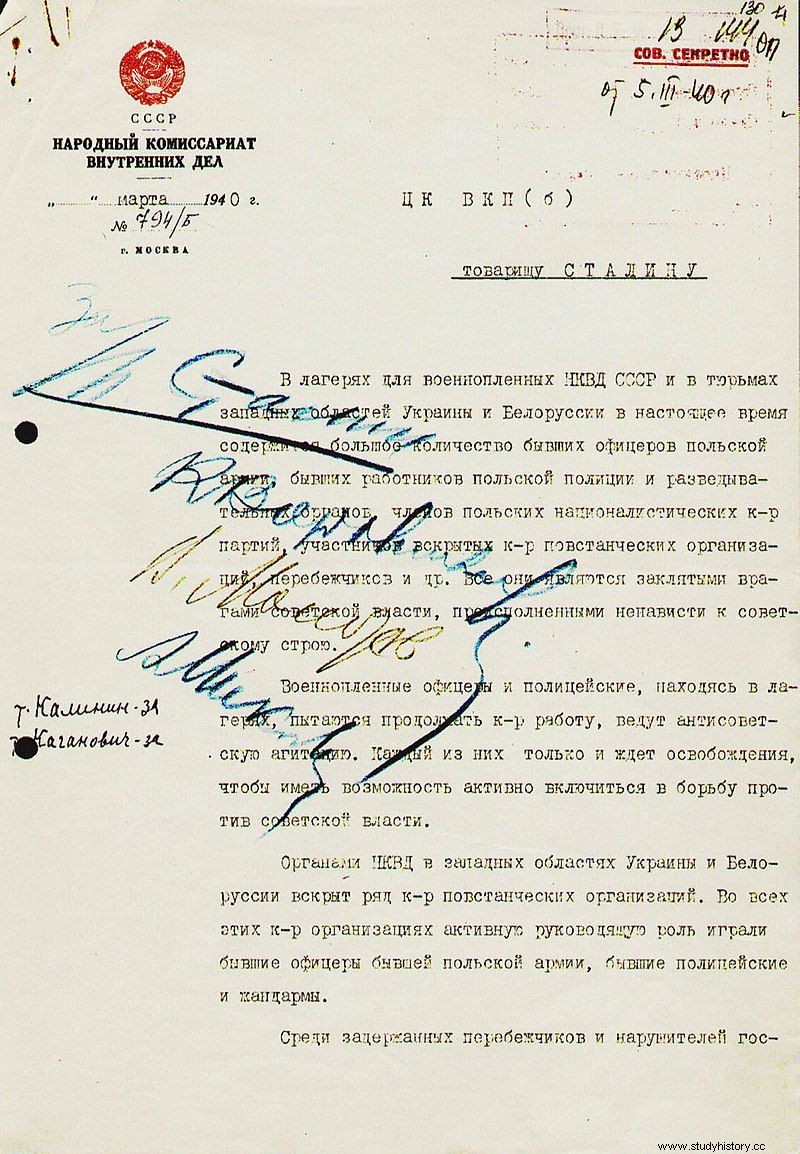Hate towards Poles cultivated for decades? Unsuccessful indoctrination and excessive costs of maintaining POW camps? Loyalty to Hitler? Or maybe revenge for losing a war? What, according to the Russian historian Nikolai Ivanov, were the real reasons for the Katyn massacre?
The tragic events of the spring of 1940 had a significant impact on the actions of Joseph Stalin on the Polish issue throughout World War II. The shooting of nearly 22,000 Polish prisoners of war and representatives of the conquered country's political elite gave the Soviet tyrant undeniable benefits, but also caused him trouble.
What, according to prof. Nikolai Ivanov, was it the Soviet dictator who sentenced Poles to death?
First Cause:Contempt for Human Life
In the Soviet reality, the murder of even such a large group of prisoners was not something exceptional. Twenty years of building the communist empire was marked by mass repression. Aleksandr Solzhenitsyn, author of the monumental work Archipelago Gulag, estimated that from the beginning of the Bolshevik revolution to 1956, over 60 million people were killed in Soviet labor camps. Most under Stalin.

Aleksandr Solzhenitsyn wrote mainly about the communist system of enslavement and terror, showing the ordeal of life in labor camps. His most famous work was the "Gulag Archipelago". The photo shows Solzhenitsyn around 1974.
According to prof. Nikolai Ivanov, in the book that has just been published "Communism in Polish" , the repressions against Poles did not touch the Soviet citizens who were used to terror. They were only a drop in comparison with the sea of blood shed by Russians and other nations during the so-called of the great terror of 1934-1939. At that time, about 200,000 Poles - Soviet citizens, were killed. Ten times more than in the spring of 1940.
In the Kremlin, the annihilation of Polish prisoners of war was considered a logical step in fighting the enemies of the system. For years, Stalin had been eliminating real and alleged opponents who were unnecessary in the process of building a "communist paradise". The Poles shared the fate of the tsarist army officers, aristocrats, representatives of the bourgeoisie, intelligentsia, richer peasants and national minorities.
The second reason:years of hatred towards Poland and Poles
Throughout the interwar period, Soviet propaganda persistently painted the image of a Pole - the enemy, exploiter and oppressor of nations. Citizens were told that Poland dreamed of restoring the borders from before the first partition. In caricatures our country was presented as a fat, mustachioed "Lord" trying to create a state from sea to sea with a saber drenched in blood . It is significant that in the 1930s the worst, according to the Soviet press, "fascist state" was not the Third Reich or Mussolini's Italy, but the Second Polish Republic.

In his latest book "Communism in Polish" prof. Ivanov points out that Stalin needed an enemy with whom he could scare his citizens, and Poland fit perfectly into the role of an "imperialist" aggressor. Economically and militarily, it was the strongest state with a democratic and parliamentary system bordering the Soviet Union. The mass acts of repression of the 1930s could be justified by an imaginary Polish threat.
From the end of August 1939, Stalin was an active ally of the Third Reich. The military failures of the Polish army soon became a favorite topic of Soviet propaganda. Our officers were portrayed as cowards and reactionaries . The defeat of Poland in the September campaign and the flight of the state leaders from the country were mocked.
Cause Three:Failure of Indoctrination
Soviet hostility towards independent Poland and Poles must have caused reactions in our country. The overwhelming majority of the officers confined in the camps did not conceal their hostility to the Soviet system. They were unable to renounce the oath taken by the Second Polish Republic.

It was in the Moscow Kremlin that the decision was made to murder Polish officers. According to the Russian historian, Prof. Nikolai Ivanov, there were many more reasons for this brutal move.
According to prof. Ivanov, this admirable patriotism largely contributed to the Kremlin's decision to exterminate Poles. Especially that the propaganda campaign addressed to Polish prisoners of war completely failed. Soviet radio broadcasts and films, talks and posters glorifying a happy life in Stalin's state came to nothing.
The failure of the indoctrination was confirmed by NKVD informers. They informed that prisoners of war did not break down and, with few exceptions, were completely immune to Soviet propaganda. These reports were consistent with the accounts of Polish survivors. Among others, prof. Stanisław Swianiewicz, noting an increase in patriotic moods among prisoners, not a weakening.
Fourth reason:NKVD can't cope
There was also a more prosaic reason for murdering Poles. The NKVD could not cope with such a large number of prisoners . Prof. Ivanov, in the book "Communism in Polish" , cites the report of the commandant of the Ostashkov camp, Paweł Borisowiec. He noted that the place of isolation lacked sleeping space, straw for mattresses and drinking water. More and more prisoners began to fall ill.

Mass grave of officers murdered in Katyn. Photo taken during the exhumation in 1943.
Moreover, Poles stood up for their rights. In January 1940, a group of colonels asked the camp commandant in Starobelsk to specify their status. They wanted to know if they were arrested or interned. The letter initiated by a member of the pre-war Supreme Military Court, Colonel Edward Saski, also raised the issue of access to the care of the International Red Cross.
In addition, at the turn of 1939 and 1940, there was a war between the Soviet Union and Finland. It was predicted in the Kremlin that camp sites would soon be needed for thousands of captured Finns. In this situation, on February 20, 1940, the NKVD Board for Prisoners of War proposed a "mild" solution to the "Polish problem" - the release to the home of most of the inmates in the camps. Only 400-500 Poles were to remain under the lockdown, constituting "a clearly counter-revolutionary element". However, Stalin decided otherwise.
Reason five:to please Hitler
Before June 1941, Stalin's "offer" to our nation coincided with Hitler's policy. Both dictators implemented a plan to physically annihilate the Polish elite and reduce the rest of society to the role of slaves.

The understandable hostility of Polish prisoners of war towards the Third Reich was another reason for the Soviet authorities to get rid of them. The murder of Poles was probably carried out with the support of the Germans although historians did not find documents confirming the thesis that the Katyn massacre was committed at Hitler's request. However, there are clues that prove German pressure.
Professor Iwanow emphasizes that high representatives of the Gestapo and NKVD at the turn of 1939 and 1940 discussed ways to tame Poles, among others during meetings in Zakopane, Krakow and Lviv. There are also more or less reliable reports that German officers watched the murder of prisoners. Even if this is not true, the Germans certainly knew about the Soviet crime in the spring of 1940, and not until three years later.
The attack of the Third Reich on the Soviet Union and the initial German military successes forced Stalin to completely reorient "Polish politics". After June 22, 1941, the existing friends became mortal enemies, and Poles painted in the darkest colors - "Slavic brothers".

Based on the preserved documents and accounts, historians are still trying to establish clear causes of the Katyn massacre. The photo shows one of the witnesses of the murder of Parfien Kisielew in a conversation with Dr. Ferenc Orsós, performing an autopsy of murdered Polish officers after the exhumation in 1943.
Sixth reason:Beria's achievements
The direct architect of the tragic events in Katyn, Mednoye, Kharkiv and other places of execution was the head of the NKVD, Lavrenty Beria. At Stalin's request, he prepared a draft resolution of the Political Bureau of the Central Committee of the VKP (b) on Polish prisoners of war. Prof. Ivanov believes that Beria proposed the physical liquidation of the Poles in order to impress Stalin and thus advance his career (you can read more about Beria in our other article).
It was planned to exterminate almost 26,000 Polish prisoners of war from the camps in Kozielsk, Ostashkov and Starobielsk, as well as people held in prisons in the former Polish Eastern Borderlands. The crime was so unprecedented that Stalin kept it a secret. The families of the shot were informed that their relatives had been sentenced to "10 years in a labor camp without the right to correspond".
The lie was revealed only in the spring of 1943, after the Germans disclosed the Katyn graves. The behavior of the Western allies was particularly painful for the Poles. Churchill and Roosevelt knew the truth from the beginning, but did not speak for a long time so as not to irritate the Soviet tyrant.

The first page of Lavrenti Beria's application, which forms the basis of the Katyn Decision of March 5, 1940.
Reason Seven:Revenge for 1920
From time to time there are claims that the Katyn genocide was revenge for the defeat suffered by the Bolsheviks in the war with Poland in 1920 or for the inhuman - according to the Russians - treatment of Russian prisoners in the Second Polish Republic. More critics have such opinions (one of them is the author of "Communism in Polish" ) than supporters, although they cannot be denied a certain logic. The "Miracle on the Vistula" really stopped the communist expansion in Europe, so the reason for revenge would be very understandable.
When, after 50 years, the Russians officially admitted the murder of Polish prisoners of war, they began to diligently look for some event that could "balance" their crime. perestroika continued , Mikhail Gorbachev was in power and it was he who commissioned an "inventory" of Soviet grievances. Since then, Russia has even started to use the term "anti-Katyn" to describe the imaginary Polish guilt against the Soviet prisoners of war of 1920 .
One-of-a-kind story of an attempt to dominate Poland by the Soviet Union:

